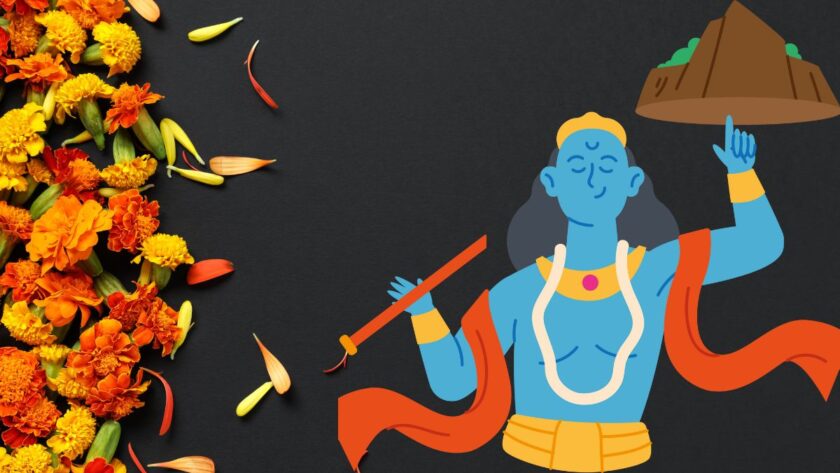Govardhan Puja honors Lord Krishna lifting the Govardhan Hill, with rituals highlighting devotion, nature, and community traditions.
In 2025, Govardhan Puja will take place on Wednesday, October 22. This festival occurs on the Pratipada Tithi in the bright fortnight of Kartik, which is valid from the evening of October 21 and lasts until the evening of October 22. Devotees can perform the puja during the morning muhurat from 05:03 AM to 07:38 AM or during the evening muhurat from 03:24 PM to 05:59 PM. This festival is celebrated as the fourth day of the five-day Diwali celebration and also represents the Gujarati New Year throughout some regions in India.
History and Importance
Govardhan Puja comes from an ancient legend written in the Bhagavata Purana about Lord Krishna lifting Govardhan Hill with his little finger to save the citizens of Vrindavan and their cows from heavy rain sent by rain god Indra. This humbled the rain god and demonstrated Krishna’s protection of the people while adding humility to the story. This festival reminds us that we should all show gratitude to nature, remain humble, and realize that humans, animals, land, and God are all interconnected. In some areas of India, this day is celebrated as Bali Pratipada, which marks the return of King Mahabali.
How Govardhan Puja Is Celebrated
People across India celebrate Govardhan Puja with devotion and even elaborate rituals. Annakut is among the major practices, where devotees create a “mountain” of foods, sweets, and seasonal vegetables to celebrate the hill that Krishna lifted. Cow worship (Gau Puja) also remains fundamental to the festival, which involves bathing and decorating cows, offering them food, and worshipping them for their role in agrarian society.
In the homes and in the temples, devotees make representations of Govardhan Hill out of cow dung, flowers, or food, while devotional songs and prayers (bhajans and kirtans) are offered, and, in some areas, devotees take parikrama of temple hills or representations of hills. Within some urban communities, devotees play the traditional game of dice or cards called Dyuta Krida for the auspiciousness of inviting wealth. Seasonal foods such as kadhi and Annakut sabji are made and offered to deities and then distributed within families and communities as prasad.
Regional Differences and Contemporary Relevance
In the Braja region, in particular Mathura and Vrindavan, the festival includes large processions and Govardhan Parikrama, in which devotees actually walk around the hill. In other states like Madhya Pradesh, Govardhan Puja has more of an emphasis on protecting nature, cows, and agrarian values. Today, the festival can also emphasize living sustainably, honoring Mother Earth, and community sharing. It reminds people to be grateful for nature’s bounty and to maintain harmony with their surroundings.
Also Read: Delhi’s Air Turns Deadly After Diwali Celebrations, AQI Crosses the 450 Mark
Frequently Asked Questions (FAQs)
- When is Govardhan Puja celebrated in 2025?
Govardhan Puja is celebrated on Wednesday, October 22, 2025, during Pratipada Tithi of the bright half of Kartik.
- What is the significance of Govardhan Puja?
The festival commemorates Lord Krishna lifting the Govardhan Hill to protect villagers and cattle from heavy rain, symbolizing devotion, humility, and respect for nature.
- What are the main rituals of Govardhan Puja?
Devotees perform Annakut (offering a mountain of food), cow worship (Gau Puja), make symbolic Govardhan Hill replicas, sing devotional songs, and play traditional games.
- Which regions observe special celebrations during Govardhan Puja?
The Braja region (Mathura–Vrindavan) conducts large processions and Govardhan Parikrama, while states like Madhya Pradesh, Gujarat, and Maharashtra focus on nature, cattle protection, and rural traditions.
- How can devotees celebrate Govardhan Puja at home?
Families can prepare seasonal dishes, offer them as prasad, decorate cows, create a small Govardhan Hill replica, perform prayers and bhajans, and participate in community or family rituals.
